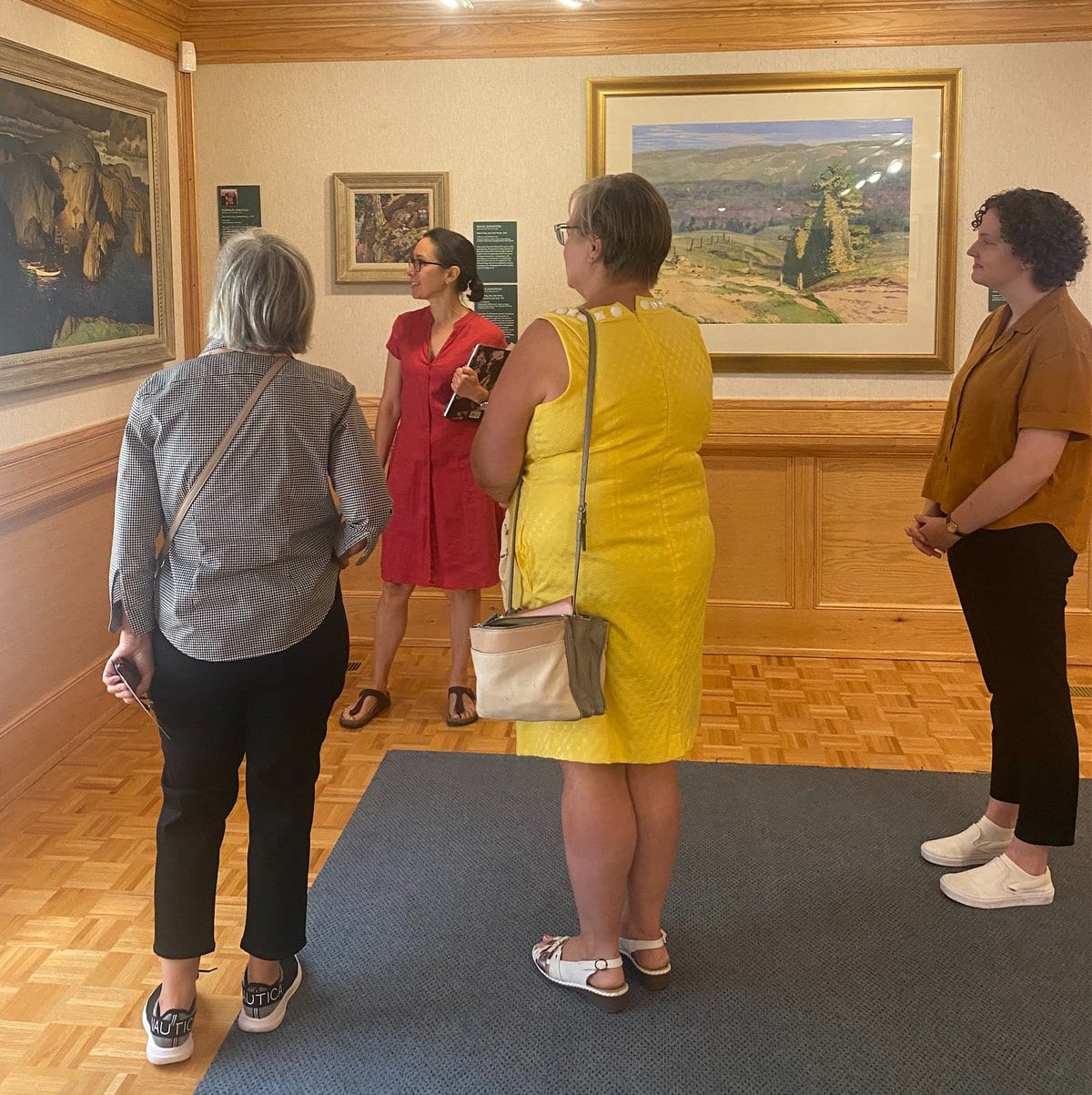Debra Antoncic
Special to The Lake Report
The summer of 2023 is speeding by and if you haven’t made it in to RiverBrink to see “A Family Palette,” circulated by the Ottawa Art Gallery, there is no time like the present.
The exhibition showcases the work of Frances-Anne Johnston (1910-1983), alongside the work of her husband, Franklin Arbuckle (1909-2001), and her father, Group of Seven founding member Franz Johnston (1899-1949).
The two men in the family have been better known than Frances-Anne and the exhibition is an opportunity to focus attention on an overlooked female artist.
In this sense, exhibition curator Rebecca Basciano, from the Ottawa Art Gallery, has characterized the show as “a feminist reclamation project.”
Visitors to RiverBrink have a chance to experience several paintings by Frances-Anne and appreciate the development of her work over time.
The exhibition works nicely as a group show, the different styles and interests of the three artists complementing each other, but the work by Frances-Anne is a standout.
This is particularly evident in her paintings of still-life and florals, in her renderings of domestic interiors, and in her experimentation with 20th-century modernism.
Frances-Anne was interested in the work of Pablo Picasso, Georges Braques and Henri Matisse, copying and imitating selected paintings in order to understand and absorb the underlying structure and composition.
Employing vibrant fabrics, a layering of objects and a flattening of the picture plane, the artist made these subjects her own.
What we don’t see is portraiture, a subject she did not explore in any depth, nor are there many landscapes in her repertoire.
We know it was more difficult for women artists to travel and paint the pure the landscape favoured by members of the Group of Seven, tied as they often were to domestic duties.
Contained within this conversation is the assumption that Frances-Anne would have followed in her father’s footsteps, but the larger context of the period is also important.
By the 1930s and into the post-Second World War era, depictions of the Canadian landscape, and the close association between landscape and Canadian national identity, were no longer the dominant mode of artistic expression.
The emphasis shifted to art that engaged with modern life in terms of subject matter, artistic approach and social activity – in the midst of the Depression, war, reconstruction and the Cold War.
This focus was evident in the exhibition Canadian Women Artists at Riverside Museum in New York in 1947.
In the same year that RiverBrink founder Sam Weir purchased one of the most iconic images of the Canadian landscape, “Sketch for the Jack Pine “(1916), by Tom Thomson, Frances-Anne Johnston contributed a still-life to the exhibition.
More than half the 74 submissions were depictions of the human figure, a concentration attributed to the tensions of the Cold War. The exhibition was organized explicitly to foster solidarity between Canada and the United States, against Soviet Russia.
The nationalist framework that has dominated Canadian art history since the 1960s has meant that this history has been overlooked, with women artists and others marginalized.
It is an oversight “A Family Palette” seeks to address. The exhibition closes Sunday, Aug. 20.
Debra Antoncic is RiverBrink’s director and curator.









